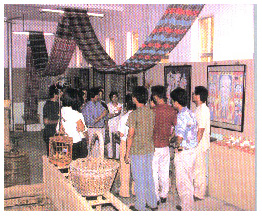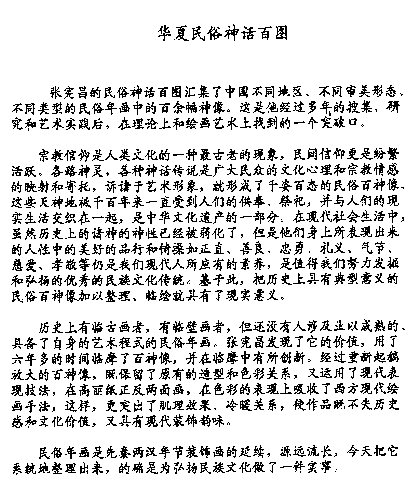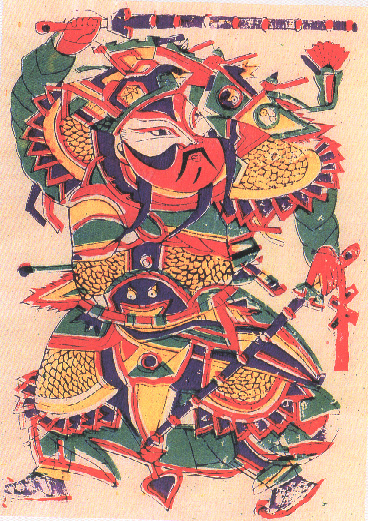
Original Paintings by
Zhang Xian Chang
click on image for enlargement
100 deities of traditional Chinese folk art
For an ambitious painter, the prospect of spending six years copying other people’s work doesn’t seem like a very pleasant job. But Zhang Xian Chang enjoyed the project (painting 100 deities). He got his reward this week when he saw the amazed expressions on the faces of visitors to his one-man show at Haiwangcun Folk Life Museum and overheard their appreciative remarks.
“It’s quite encouraging to see people interested in them. It only proves that the public still needs the arts very close to their lives,” said Zhang, an artist who comes from Shandong Province.Zhang recently held his one-man show, “One Hundred Deities of Traditional Chinese Folk Religion,” at the museum on Liulichang Cultural Street in Xuanwu District.
The 100 deities of traditional Chinese folk religion that Zhang painted were selected from a large but scattered collection of Chinese New Year paintings. During the Spring Festival, the most important holiday for the Chinese, ancient people would draw pictures and paste them on their doors. They’ve been doing so for more than 2,000 years. The people believed in many gods or holy spirits and hoped they could provide protection from natural disasters. The tradition was carried on from one dynasty to another, and later the pictures were used as decorations. Painting techniques matured and styles diversified.
“Pasting up these New Year paintings was a must during the Spring Festivals in the old times,” Zhang explained. “But like many traditional folk arts, it has been neglected and has lost its popularity in modern society.” Zhang came up with the idea of copying the pictures when he was doing post-graduate study at the China Central Academy of Arts and Design in 1991. “I was so impressed by the high standard of art of the New Year pictures and moved by the ancient people’s craving for beauty. That’s why I decided to copy them,” Zhang said.
For the past six years, he spent all his spare time tirelessly duplicating while teaching at Liaocheng Teacher’s College. He rented a room in a peasant courtyard so he would have room to store pictures that didn’t fit in his two-room appartment. To start out he tried to find as many New Year paintings as possible. He wrote to friends and acquaintances across the country, searched through libraries and talked to local people wherever he travelled.
He finally selected 100 different deities, which were popular in different areas of the country. Some of the models are from books containing genuine pictures collected by foreign missionaries. He also worked from originals, a difficult task since many had been damaged and had to be pieced togethe, or the original colors had faded. Zhang’s years of research into folk arts and customs paid off. Plus, he perfected the originals using modern art mediums. He enlarged the pictures, blending modern mural anddecorative techniques to give them a stronger ornamental appeal while preservingthe original features — the vivid expressions, dazzling colours and rhythmic lines.
Zhangwill return to his hometown in Shandong Province after the the exhibition, but said he plans to come back with more in the near future. “Maybe next time I will bring 100 boys from Chinese religion and legends,” Zhang mused.

Zhang Xian Chang in his studio
at Liaocheng University


The paintings by Zhang Xian Chang on this webpage, as well as folk art woodblock prints
that inspired them, like the one above, are available for purchase at the email below.
x